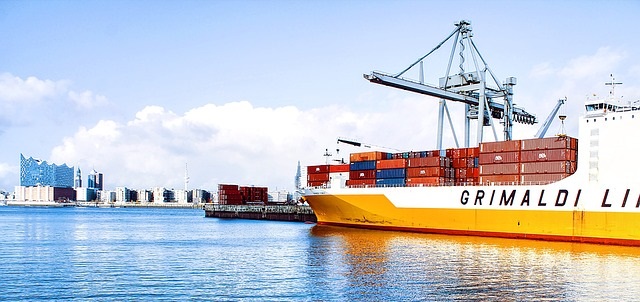
Gambia’s main imported goods
Gambia, a small West African nation, imports a diverse range of goods, largely due to its limited domestic manufacturing capabilities and reliance on foreign products to meet consumer and industrial demands. The country’s imports reflect its population’s needs, with goods coming primarily from China, India, Côte d’Ivoire, and the European Union. Here’s a closer look at Gambia’s main imported goods:
1. Food and Agricultural Products
Agriculture plays a significant role in Gambia’s economy, but it struggles to produce enough food to feed its population. As a result, Gambia imports a considerable amount of food and agricultural products. Key imports in this category include rice, sugar, wheat, and other cereals. Rice is the main staple, but local production meets only a fraction of demand, making rice imports critical. Other essential food items, such as cooking oils, dairy, and processed foods, also make up a large share of the food imports. These imports help mitigate food insecurity, which could arise from local production shortfalls or adverse weather conditions affecting agricultural output.
2. Fuel and Petroleum Products
Gambia heavily depends on imported fuel and petroleum products to power transportation, industry, and electricity generation. Petroleum imports are one of the country’s largest expenses because it does not produce oil or gas domestically. The country imports gasoline, diesel, kerosene, and other refined petroleum products, mostly from neighboring countries or the international market. Since petroleum is crucial for powering machinery, generating electricity, and operating vehicles, any increase in global oil prices can significantly impact Gambia’s economy. The country’s dependence on these imports means that fuel price fluctuations can directly influence inflation and the cost of living.
3. Vehicles and Transportation Equipment
Given that Gambia has limited vehicle production capabilities, it relies on imports for almost all of its transportation equipment. Imported vehicles include personal cars, motorcycles, buses, and trucks, along with parts and accessories needed for vehicle repair and maintenance. These imports, mainly from the United States, Europe, and Asia, support the country’s transport infrastructure. Imported vehicles play a critical role in the transportation of people and goods, essential for both personal mobility and commerce. The limited availability of domestic manufacturing makes imported vehicles a staple of the market.
4. Machinery and Electrical Equipment
Machinery and electrical equipment constitute another significant category of Gambia’s imports. Industrial machinery, construction equipment, and agricultural machines are all imported, as Gambia lacks the capacity to manufacture them locally. Electrical equipment such as generators, transformers, and appliances are also vital imports, as they support both residential and industrial energy needs. These imports are critical to the development of infrastructure and industry within the country. With growing infrastructure projects, the demand for imported machinery is likely to remain high, especially as the government looks to develop roads, bridges, and other public works.
5. Textiles and Clothing
The textile and clothing industry in Gambia relies heavily on imported materials, primarily from China and India. Imported textiles and ready-made garments are widely sold across markets in the country, catering to both formal and traditional attire needs. While some local artisans and tailors create garments using imported fabrics, the lack of domestic textile manufacturing makes imports necessary. Clothing items, including shoes and accessories, are popular in urban areas where fashion trends often reflect global styles. Imported clothing is thus central to meeting the country’s demand for both daily wear and traditional garments.
6. Pharmaceuticals and Medical Supplies
Gambia imports most of its pharmaceuticals and medical supplies due to limited domestic production in this sector. Medications, medical equipment, and healthcare products are imported to support hospitals, clinics, and pharmacies. Pharmaceuticals come mainly from Europe, China, and India. Imported medicines are critical to addressing health issues such as malaria, HIV/AIDS, and other common illnesses. The COVID-19 pandemic also highlighted the importance of reliable imports of medical equipment and supplies. With growing healthcare needs, Gambia’s reliance on imported pharmaceuticals is likely to remain high.
7. Construction Materials
Gambia’s construction sector has seen growth in recent years, with a rise in both public infrastructure and private real estate development. To meet the demands of the construction industry, Gambia imports cement, steel, glass, tiles, and other materials. These materials are essential for building homes, roads, schools, and hospitals. The construction boom in urban areas has increased the demand for high-quality materials, which are largely unavailable locally. As urbanization continues, the need for imported construction materials will likely remain a crucial part of Gambia’s import portfolio.
8. Consumer Electronics and Household Goods
Consumer electronics, including mobile phones, televisions, refrigerators, and computers, are popular imports due to the lack of domestic production capabilities. These goods come from global suppliers, primarily in China and other parts of Asia. With the growing urban middle class, demand for electronics has surged, especially for communication and entertainment devices. Additionally, small home appliances and kitchenware items are essential household goods that are almost exclusively imported, catering to the urban population’s lifestyle needs. As Gambia’s economy grows, the demand for these products is expected to increase further.
Conclusion
Gambia’s reliance on imports is driven by limited local manufacturing and a need to support basic consumer needs, industrial activity, and infrastructure development. Food, fuel, machinery, pharmaceuticals, and consumer goods form the backbone of its imports, reflecting the everyday and long-term needs of its population and economy. However, this reliance on imports also means that global market fluctuations, particularly in fuel and food prices, can significantly impact the nation’s economy and the cost of living. Efforts to reduce import dependency and increase local production could help Gambia stabilize its economy, though that shift will require substantial investment and development.




Leave a Reply